German tank bridge layer Biber
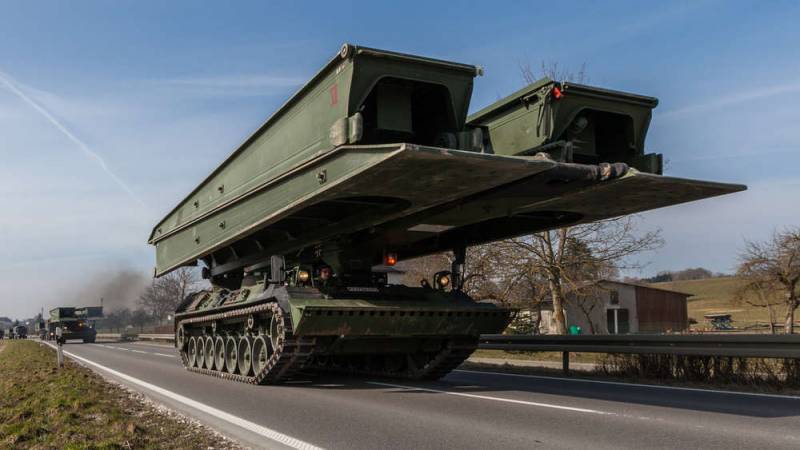
Biber bridgelayer in transport position. Photo by the Ministry of Defense of Germany
The ground forces of Germany have a fairly large fleet of engineering armored vehicles for various purposes. So, for the organization of crossings over various obstacles, for several decades, tank Biber bridgelayers. At the time of their appearance, they had rather high characteristics, but by now they have become obsolete and are gradually being replaced by modern technology.
According to new requirements
In the mid-sixties, the engineering units of the Bundeswehr still used American-made M48 AVLB tank bridge layers. This technique was not new, the regular bridge had a limited carrying capacity, and when laying it, the crew had to leave the protected space.
In 1965, the latest Leopard 1 tanks began to enter service with the Bundeswehr, and it was decided to develop a new family of engineering equipment to ensure their operation and use. In particular, it was required to build a new bridge layer on the unified Leopard chassis.
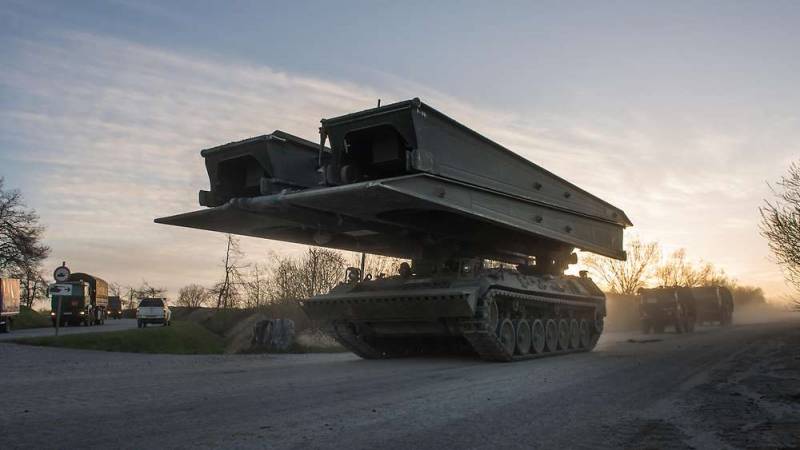
View from a different angle. Photo by the Ministry of Defense of Germany
The terms of reference for the new project were released in March 1968. The customer demanded the use of the Leopard 1 chassis and allowed it to be finalized. A bridge with a carrying capacity of 60 tons should have been installed on the machine, the design of which will provide covert laying. At the same time, during operation, the crew had to remain inside the armored hull.
Two projects were submitted for the competition. The bridgelayer, designated "A", was proposed by Klockner-Humboldt-Deutz, and Porsche, in cooperation with Krauss-Maffei, developed the "B" project. They met the requirements of the customer, but the key tasks were solved in different ways. First of all, the designs of bridges and the ways of laying / lifting them differed.
In September 1968, the development participants received an order for the construction of experimental equipment. For testing, it was planned to assemble two engineering vehicles and three bridges of each type. These works took about a year, and in the early autumn of 1969, all the equipment went to factory tests. In February 1970, bridgelayers "A" and "B" arrived at the 51st test center (Koblenz) for comparative testing and trial operation.
In August 1970, the Bundeswehr analyzed the test results and called the B bridgelayer from Porsche and Krauss-Maffei more successful. After that, it took about a year and a half to fine-tune the project and prepare for production, and in 1972 a contract for the series appeared. For a number of reasons, the assembly of the bridgelayers was entrusted to Maschinenbau Kiel (MaK). In 1973, the first production vehicles entered the army and were put into service under the name Biber ("Beaver").
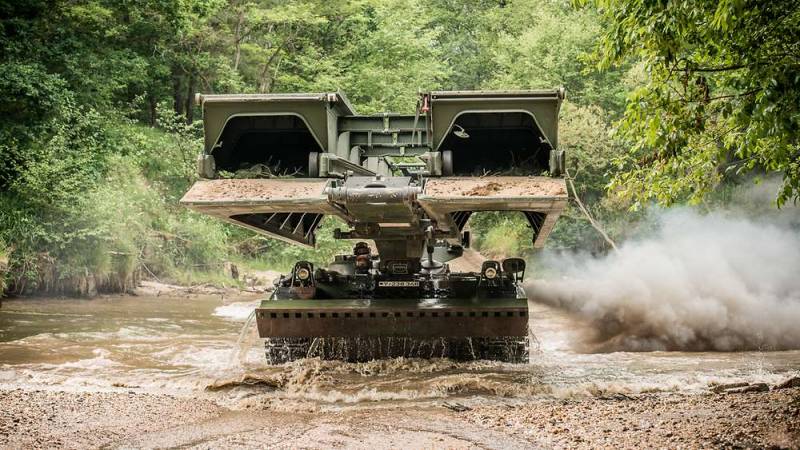
Crossing a water barrier. Photo by the Ministry of Defense of Germany
Technical features
The Biber tank bridge layer was built on the basis of the Leopard 1 tank with minimal modifications to its design. The tank lost its turret and equipment of the fighting compartment, but retained the hull with anti-projectile armor on the forehead. The power plant remained the same - diesel MTU MB 838 CA-500 with an HP 830 power. They also retained the seven-wheel chassis with a torsion bar suspension.
After all the modifications and the installation of the bridge, the weight of the car exceeded 45 tons. However, the driving characteristics remained at the same level. The bridgelayer "Beaver" could operate in the same order as the "Leopards" and other armored vehicles.
To work with the bridge, the engineering machine received several new devices. A bulldozer blade appeared on the lower frontal part of the hull, used as a support during work. Above, a lifting boom with drives for controlling the bridge was installed on the forehead, and a movable support was placed in the stern for its laying. The operation of all these units was provided by a hydraulic system that was absent from the base tank.
An original bridge structure with a length of 22 m and a load capacity of 60 tons was developed. During its creation, the scissor structure was abandoned and a sliding scheme was used. It was assumed that due to this, the units would not rise and give out the position of the bridgelayer, attracting unnecessary attention of the enemy.
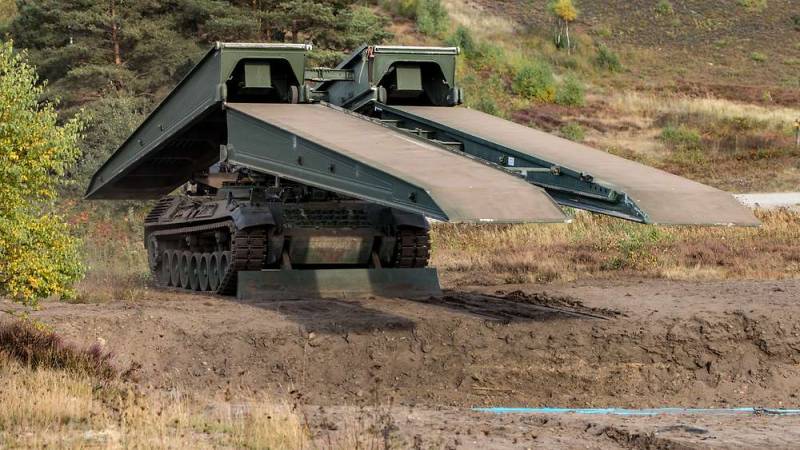
Bridge laying process: the lower section moves forward. Photo by the Ministry of Defense of Germany
The track bridge for the Biber machine had a mass of approx. 10 tons and consisted of two sections with a length of 11 m each. The total width of the bridge was 4 m, the gauge elements were 1,5 m each. Each section consisted of two longitudinal box-shaped wedge-shaped elements. At the wide end of each beam, locks were provided for connection in the working position. Between the beams there were devices for interacting with the bridgelayer boom and its mechanisms.
The lintels between the beams made it possible to disassemble the bridge section into two parts. In this form, they could be transported on a special semi-trailer or by rail. After reassembly and installation on an armored vehicle, the bridge was ready for work.
The principle of operation of the bridgelayer was simple. Both halves of the disassembled bridge structure were placed on the boom and rear support of the Beaver, one on top of the other. At the same time, there was one below that was supposed to lie on the opposite edge of the trench or other barrier. Approaching the obstacle, the bridgelayer had to lower the blade and raise the boom with the sections of the bridge.
Further, with the help of a chain drive, the lower section was pushed forward until it exited from under the upper one, when they automatically engaged. After that, the car could extend the bridge as much as possible, lay it on a trench and depart to a safe place, giving way to other equipment. The cleaning of the bridge was carried out in the reverse order. The process of laying or cleaning took approx. 10 min.
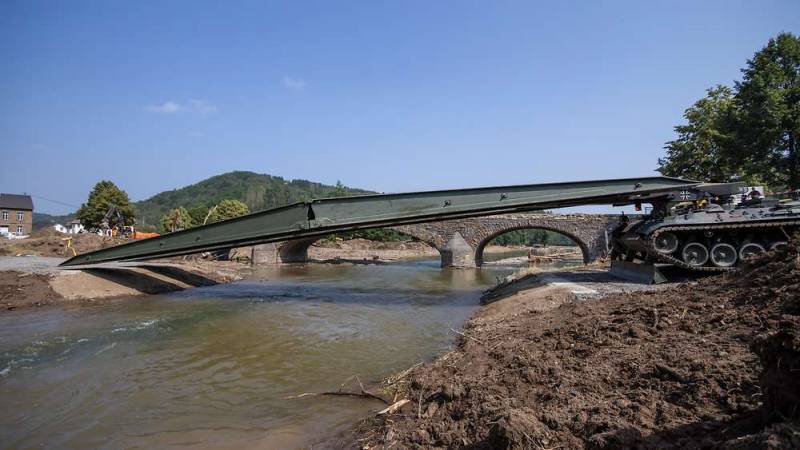
The bridge is laid on the banks of the river. Photo by the Ministry of Defense of Germany
The bridgelayer was to be controlled by a crew of only two people - the driver and the commander-operator. During movement and work, they were located inside the hull under the armor. For self-defense, there was a machine gun and smoke grenade launchers.
Equipment in operation
Serial production of bridge layers and bridge structures began in 1972-73. at several German enterprises. The first batches of these products were handed over to the customer already in 1974-75. In total, it was planned to build 105 engineering vehicles and more bridges - with a margin for the future.
The order of the Bundeswehr was successfully completed in a few years. The equipment entered the ground forces and was transferred to platoons of engineering vehicles - 2 units each. in everyone. More than a hundred "Beavers" made it possible to equip all the engineering units of linear connections, as well as create a small reserve and a fleet of training equipment.
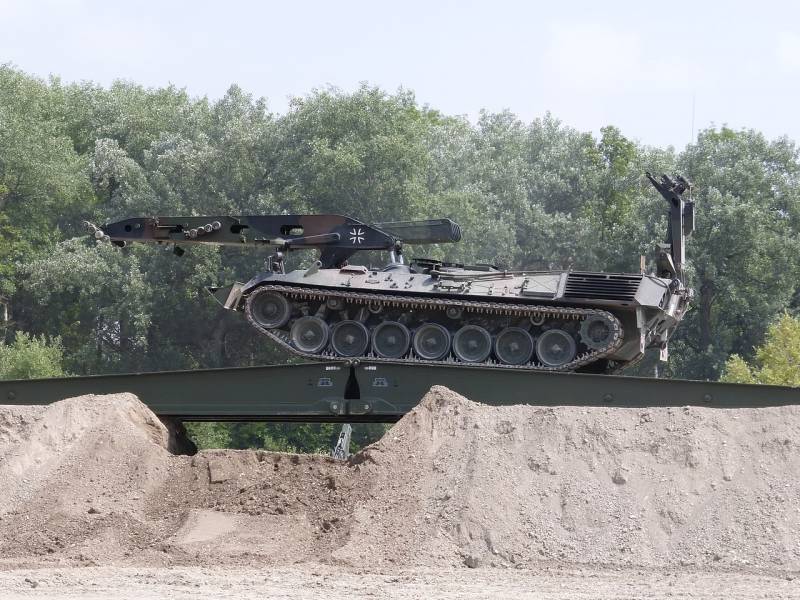
"Beaver" uses its own bridge. Photo by Wikimedia Commons
The German bridge layer has interested some foreign countries. So, Italy acquired a license and manufactured more than 60 armored vehicles on it. There were contracts with the Netherlands, Poland, Denmark and a number of other countries. At the same time, Germany carried out part of such deliveries at the expense of its own fleet. In the nineties, the composition and equipment of the Bundeswehr was revised towards reduction, and, along with other equipment, dozens of Biber vehicles were released. They decided to sell them abroad.
In the last 10-15 years, there has been a reason for an additional reduction of the "Beavers" or for a complete refusal for them. Modern MBT Leopard 2 in the course of modernization became considerably heavier and no longer fit into the limitations of the old 60-ton bridge. In this regard, the development of new engineering equipment and bridge structures was started, and Biber underwent additional reduction.
According to known data, at the beginning of 2022, Germany had only 20-22 Biber products left. In the fall, several of these vehicles were handed over to Ukraine in order to help, and they also promised additional deliveries. It is quite possible that the support of the Kyiv regime will lead to the complete write-off of such equipment.
German bridgelayers for the first time in almost half a century of service got the opportunity to show themselves outside the training grounds. However, as far as is known, Ukrainian formations have not yet used them. In addition, the use of such a technique may be associated with certain difficulties. So, later versions of the Leopard 2 MBT were also transferred to Ukraine, which are too heavy for any bridge layers it has, incl. for the German "Beaver".
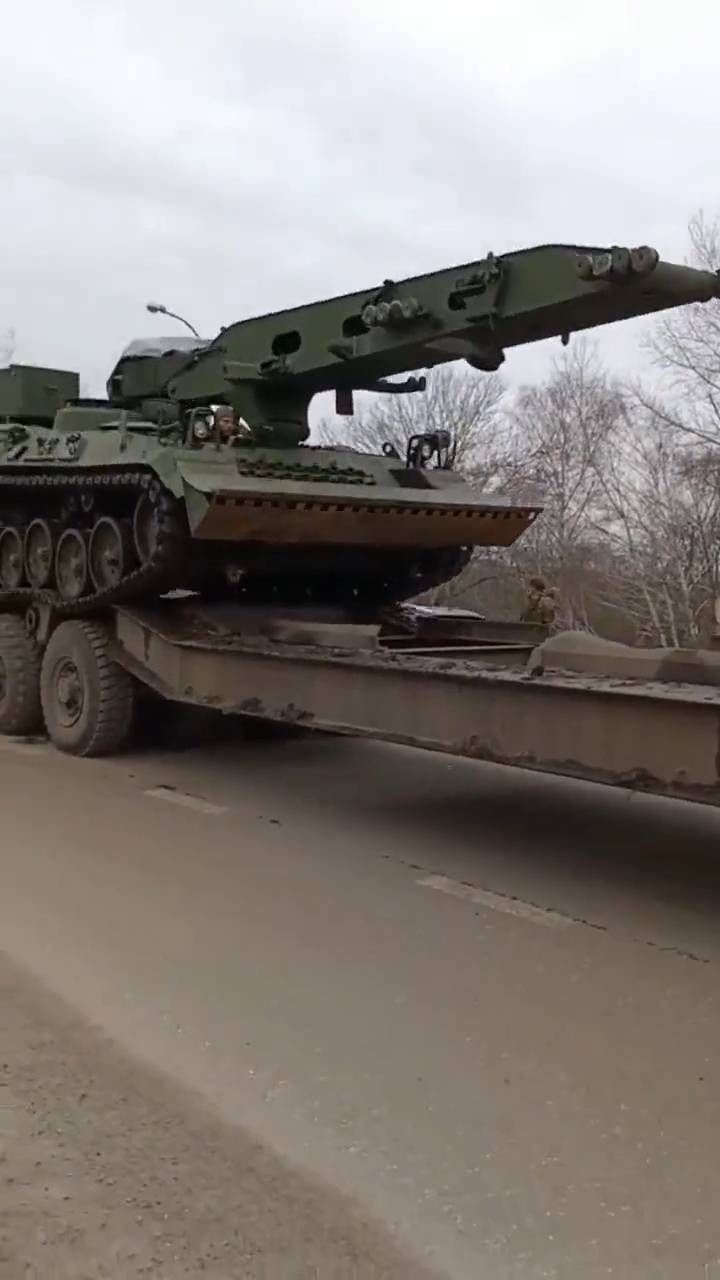
One of the bridgelayers sent to Ukraine, December 2022. Photo by Telegram / BMPD
However, the experience of using other engineering equipment and combat vehicles in the framework of the so-called. The counter-offensive shows that the Biber bridgelayers will face an unenviable fate. Some of them will be blown up by mines before reaching obstacles, while others will be destroyed by artillery or drones when trying to install a bridge.
Machine from its time
The tank bridge layer Biber began to enter the Bundeswehr in the mid-seventies and quickly showed its best side. Due to high performance and unification with a serial tank, such equipment could effectively solve its task and provide the required troop mobility in any conditions.
However, a new main tank Leopard 2 soon appeared and entered service, which differed from its predecessor in improved protection and a larger mass. MBT and advanced technology based on it presented completely different requirements for bridge structures, and they were constantly growing. As a result, German armored vehicles of the latest models can no longer use the half-century-old bridge. In addition, Biber as a whole is not new and uses an old chassis, which makes its further use impractical.
Thus, at one time, German industry created a new model of engineering equipment for the ground forces, and it completely suited the customer. But over time, the bridge layer became obsolete morally and physically, as a result of which they began to abandon it. Now the Bundeswehr is receiving modern bridge layers with stronger bridges. Unnecessary obsolete vehicles, meanwhile, are sent to the "ally" as military "aid".
Information